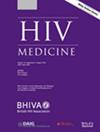Residential and healthcare mobility during pregnancy among women living with HIV in the UK, 2009–2019
Abstract
Introduction
The extent to which individuals living with HIV experience residential and healthcare mobility during pregnancy in the UK is unknown. We aimed to determine a minimum estimate of residential and healthcare mobility during pregnancy in people living with HIV in the UK in 2009–2019 to explore patterns of and factors associated with mobility and to assess whether mobility was associated with specific HIV outcomes.
Methods
We analyzed data from the Integrated Screening Outcomes Surveillance Service to assess pregnancies with HIV in the UK and included livebirths and stillbirths with estimated delivery in 2009–2019. Residential mobility was defined as changing residential postcode between notification and delivery, and healthcare mobility was defined as changing NHS Trust or Strategic Health Authority (SHA) in that same timeframe. We used logistic regression to determine factors associated with residential and healthcare mobility and with detectable delivery viral load.
Results
Among 10 305 pregnancies, 19.6% experienced residential mobility, 8.1% changed NHS Trust, and 4.5% changed SHA during pregnancy. Mobility was more likely to be experienced by younger women, migrants, and those with new antenatal diagnosis; residential but not healthcare mobility declined over time. In a fully adjusted model, mobility was not associated with having a detectable viral load at delivery. Higher proportions of infants were lost to follow-up after mobile pregnancies than after non-mobile pregnancies.
Conclusions
This analysis provides new knowledge on mobility during pregnancy in the context of HIV, but further research is needed to understand its broader impacts and its utility as a marker to help identify families requiring additional follow-up and support.

 求助内容:
求助内容: 应助结果提醒方式:
应助结果提醒方式:


